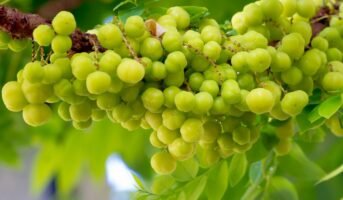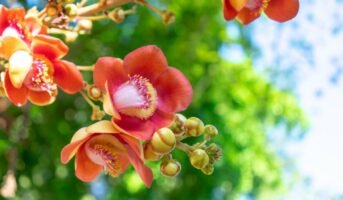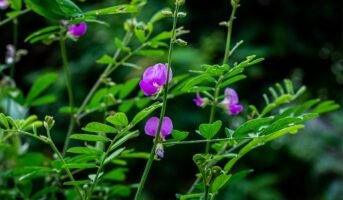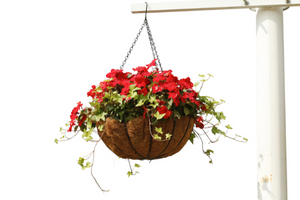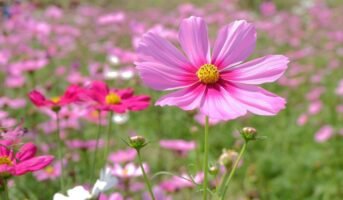Robinia pseudoacacia is a tropical plant that is commonly known by the name black locust. This hardwood deciduous tree is a part of the legume family Fabaceae. The plant is a native of North America, Europe, Southern Africa, and Asia. Since the plant looks extremely similar to Acacia, it is also called False Acacia in many places.
The plant is known for its beautiful flowers, which adorn every branch in spring and summer. The flowers grow in trellises and clusters. They are usually white in colour and resemble pea flowers. The fruits and seeds on the plant also resemble peas and are contained in pods. The bright green, oval leaves are also a top attraction of Robinia pseudoacacia. The flowers have a sweet scent and are often used in perfumery.

Source: Pinterest
Black locusts usually grow along woods just on the outskirts of densely vegetated areas. They prefer plenty of sunlight and do not fare well in shady areas. The blooming season for Robinia pseudoacacia is the best time of the year, and the beautiful flowers truly create a sight to behold.
Robinia pseudoacacia: Key Facts
| Name | Robinia pseudoacacia |
| Common name | Black locust |
| Type | Deciduous |
| Native | North America, Europe, Southern Africa, and Asia |
| Season | May-June |
| Soil | Moist, Loamy soil |
| Water | Regular |
| Sunlight | Partial shade, medium sunlight |
| Temperature | 25-30°C |
| Fertiliser | Phosphorus fertiliser |
| Flowers | White with large petals, grows in clusters |

Source: Pinterest
Ideal conditions to grow Robinia pseudoacacia
Robinia pseudoacacia grows in the wild and can be found everywhere in Europe and other tropical countries. The tree is found in abundance, which means that they are pretty low maintenance and don’t require a lot of care like other flowering plants and trees.
They do take time to grow into mature trees, but a little bit of care and proper nourishment will go a long way to help. You won’t have to labour away for several days in a week to look after this tree.
Here are some care tips to help you ensure the overall growth of the tree:-
Soil
The Robinia pseudoacacia plant doesn’t have a lot of demands from the potting soil. You can use anywhere from fertile loamy soil to heavy clay. However, make sure the soil drains properly to avoid root rot in the early stages. They are grown in the ground, so try to plant them outside the pot.
Water
The Robinia pseudoacacia plant requires regular watering and can use up water rapidly in summers. Make sure to check if the top soil is dry and water when it is. If your area experiences monsoon seasons, you won’t have to worry about it withstanding floods and water stagnation for short periods.
Light
Robinia pseudoacacia is an outdoor plant that requires heavy sunlight for growth. It needs to be planted in sunny corners of your garden where it receives unobstructed sunlight. The plant doesn’t like shade, so don’t put it in dark corners that receive less than 4 hours of sunlight.
Benefits of Robinia pseudoacacia
The Robinia pseudoacacia tree grows in abundance and adds to the beauty of the landscape. You can plant them in your garden and yard to enhance the look of your outdoor space. The sweet-smelling flowers can be used to make perfumes and fragrances.
However, Robinia pseudoacacia is not just a mere ornamental plant. The tree and its parts have been used in ancient homoeopathic and ayurvedic medicines to cure many illnesses. The purgative properties of the plant make it an excellent cure for medical problems and align with the benefits of using homoeopathy.

Source: Pinterest
Here are some of the health benefits of Robinia pseudoacacia that many may not know about:
- The flowers of the Robinia pseudoacacia plant act as antispasmodic and have laxative properties as well. They are used to aid digestion and relieve constipation.
- The inner bark and the root bark of the plant have purgative properties and act as a tonic for related ailments. The purgative property makes it a good ingredient for homoeopathy and ayurvedic medicines.
- The root bark of Robinia pseudoacacia is also used for curing toothache that can be extremely painful to bear otherwise.
- Dried leaves are useful in the treatment of wounds caused by burns.
- The plant is also said to remove stomach burns and cure medical issues like hyperacid gastritis and distensions.
- Black Locust is also used in Homoeopathy medicine for the fast treatment of asthma and bronchitis.
FAQs
Is Robinia the same as Acacia?
Robinia and Acacia are often confused because they look pretty similar. Acacia is tropical and a native plant of Africa. On the other hand, the Black locust is native to Australia and South America.
Is Black Locust poisonous to humans?
Only the seeds of the plant are poisonous to humans. The inner bark, roots, and twigs are unsuitable for livestock. However, these parts can be consumed by humans.
Are Robinia trees poisonous to dogs?
Yes, Robinia pseudoacacia trees are poisonous to dogs. Ingestion of the plant may result in nausea, vomiting, and diarrhoea in dogs.
Housing News Desk is the news desk of leading online real estate portal, Housing.com. Housing News Desk focuses on a variety of topics such as real estate laws, taxes, current news, property trends, home loans, rentals, décor, green homes, home improvement, etc. The main objective of the news desk, is to cover the real estate sector from the perspective of providing information that is useful to the end-user.
Facebook: https://www.facebook.com/housing.com/
Twitter: https://twitter.com/Housing
Email: [email protected]

